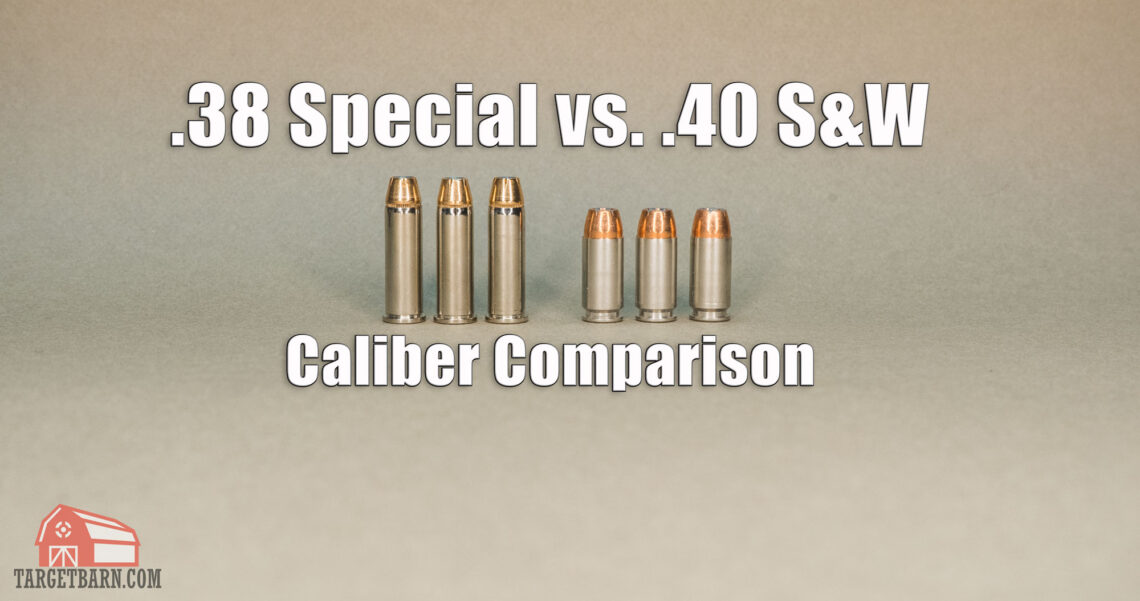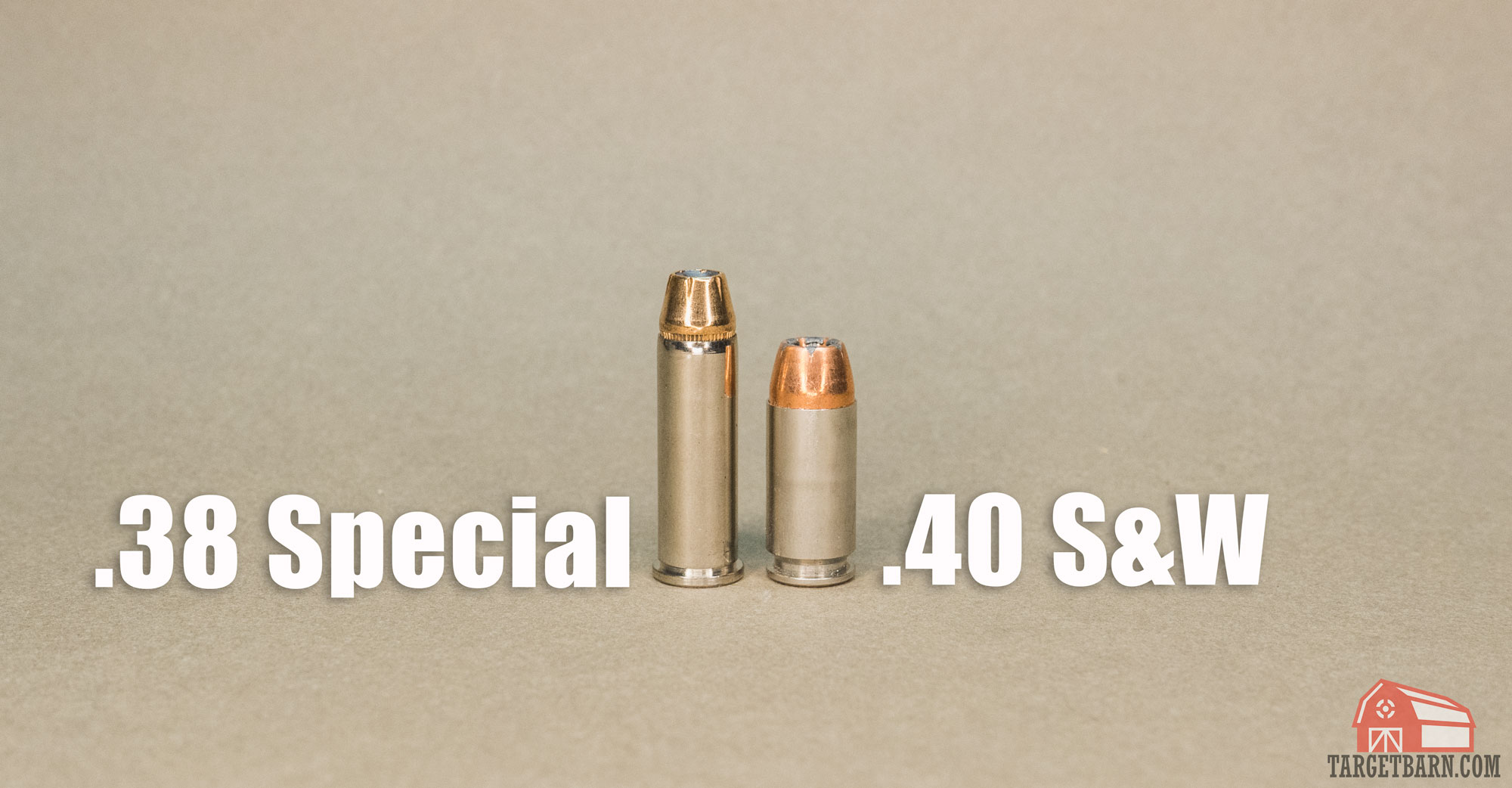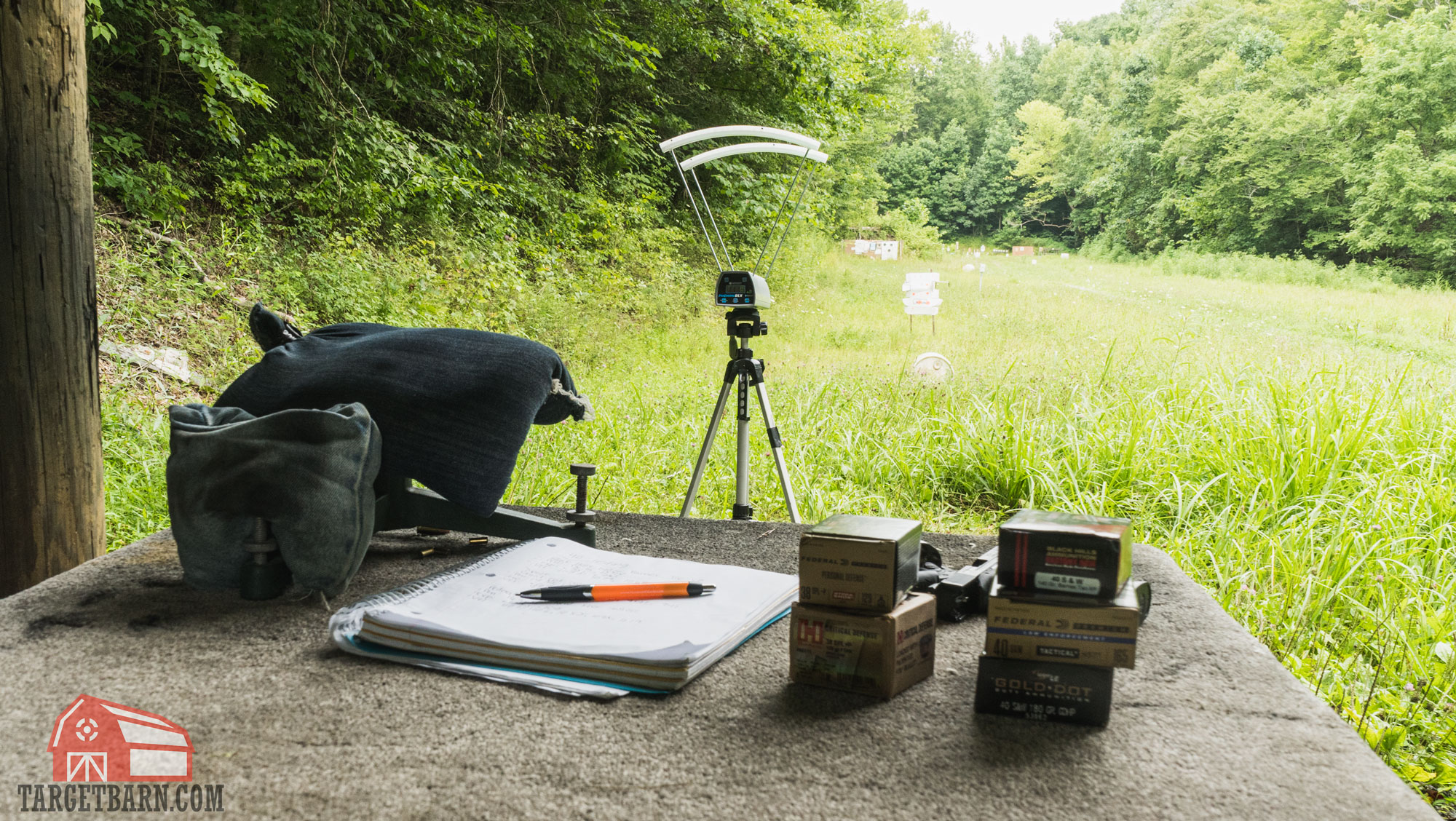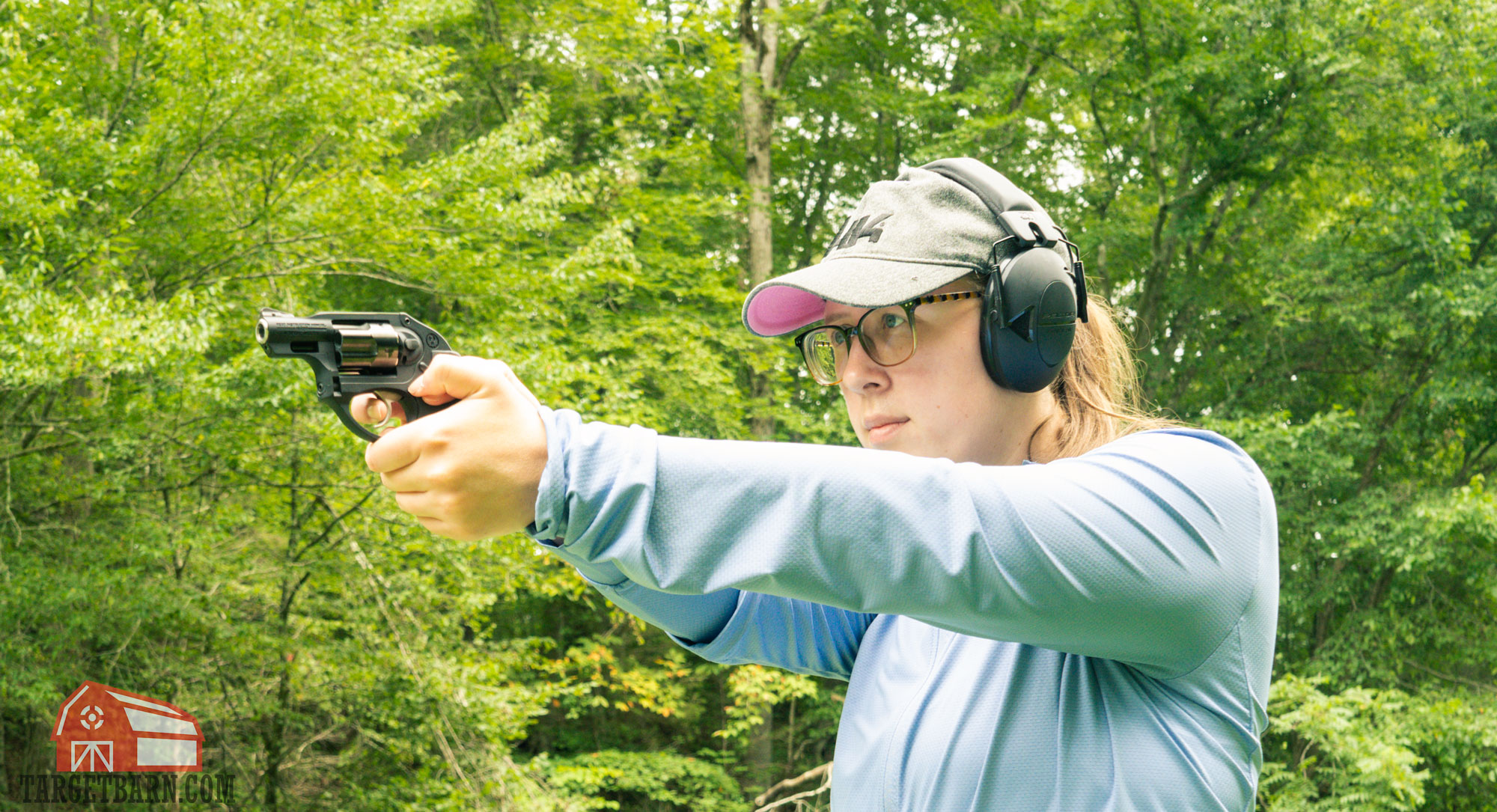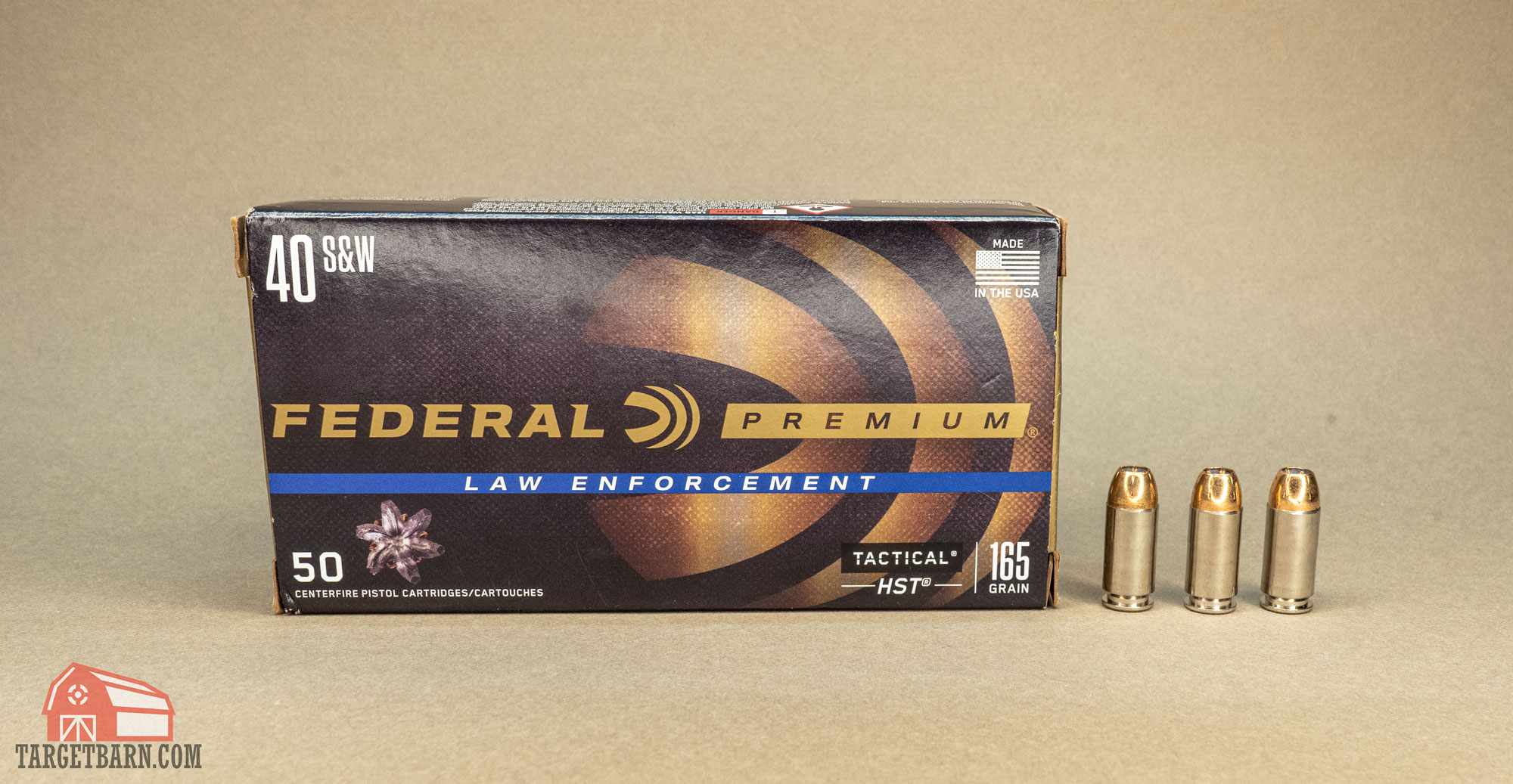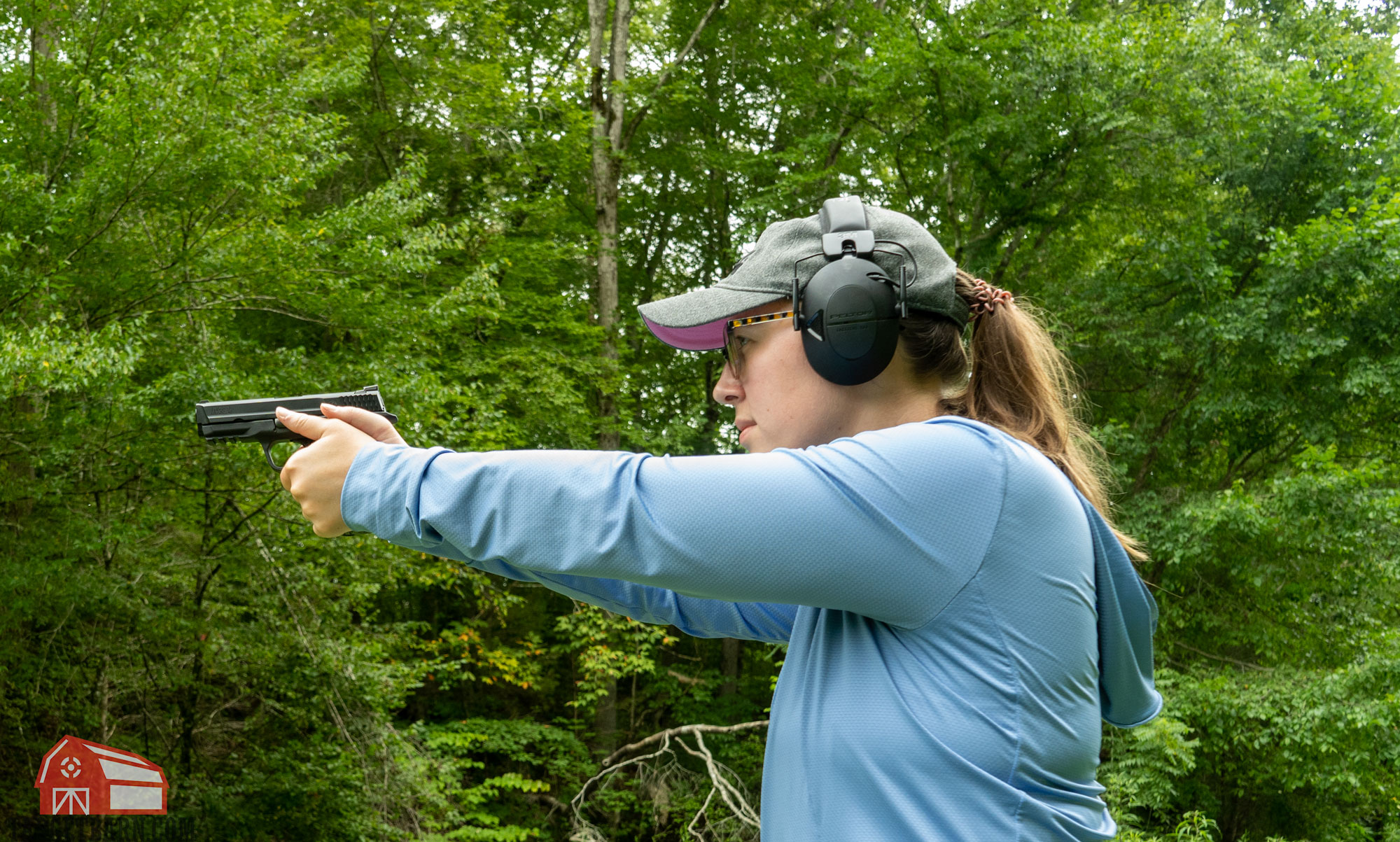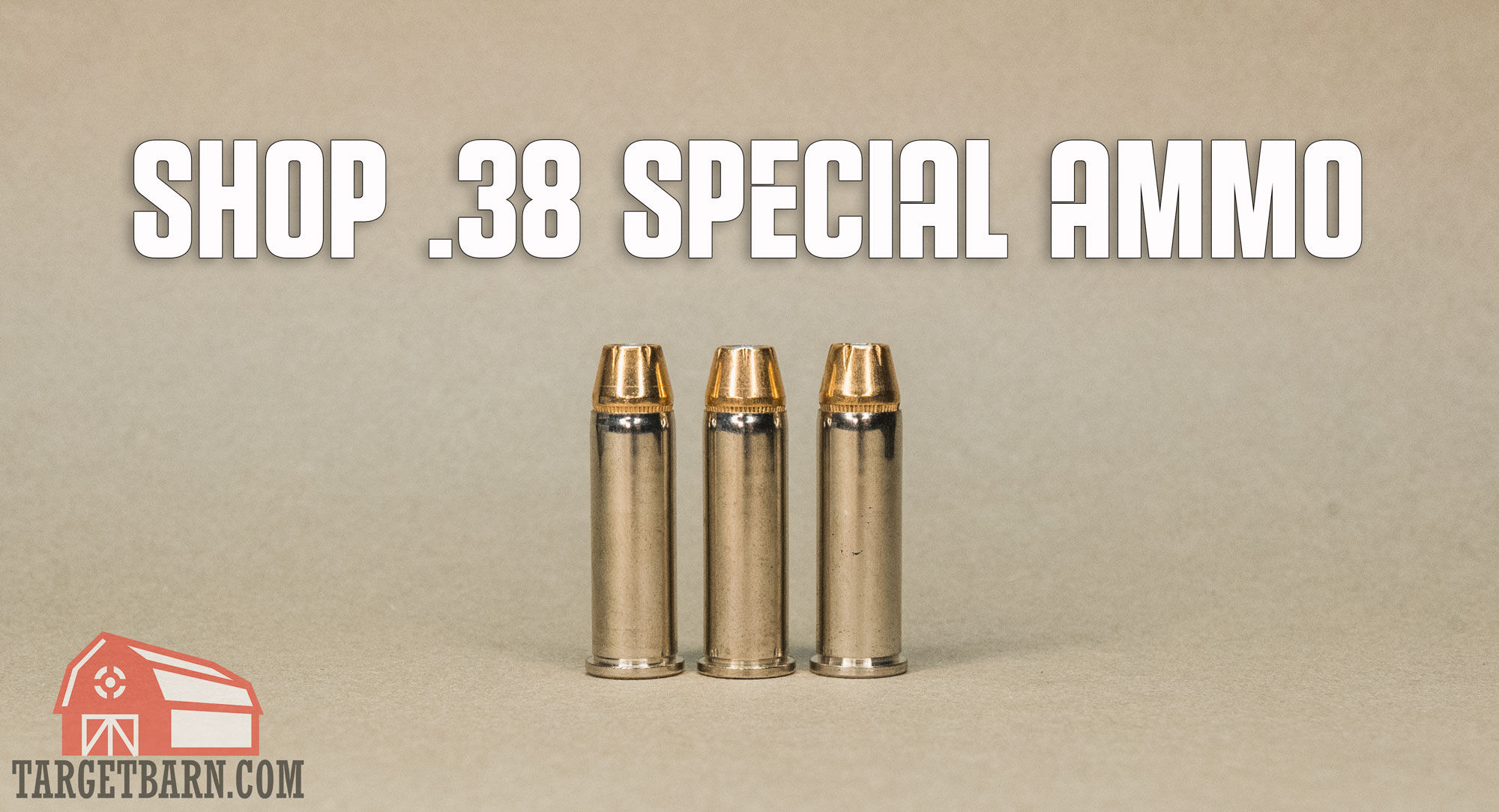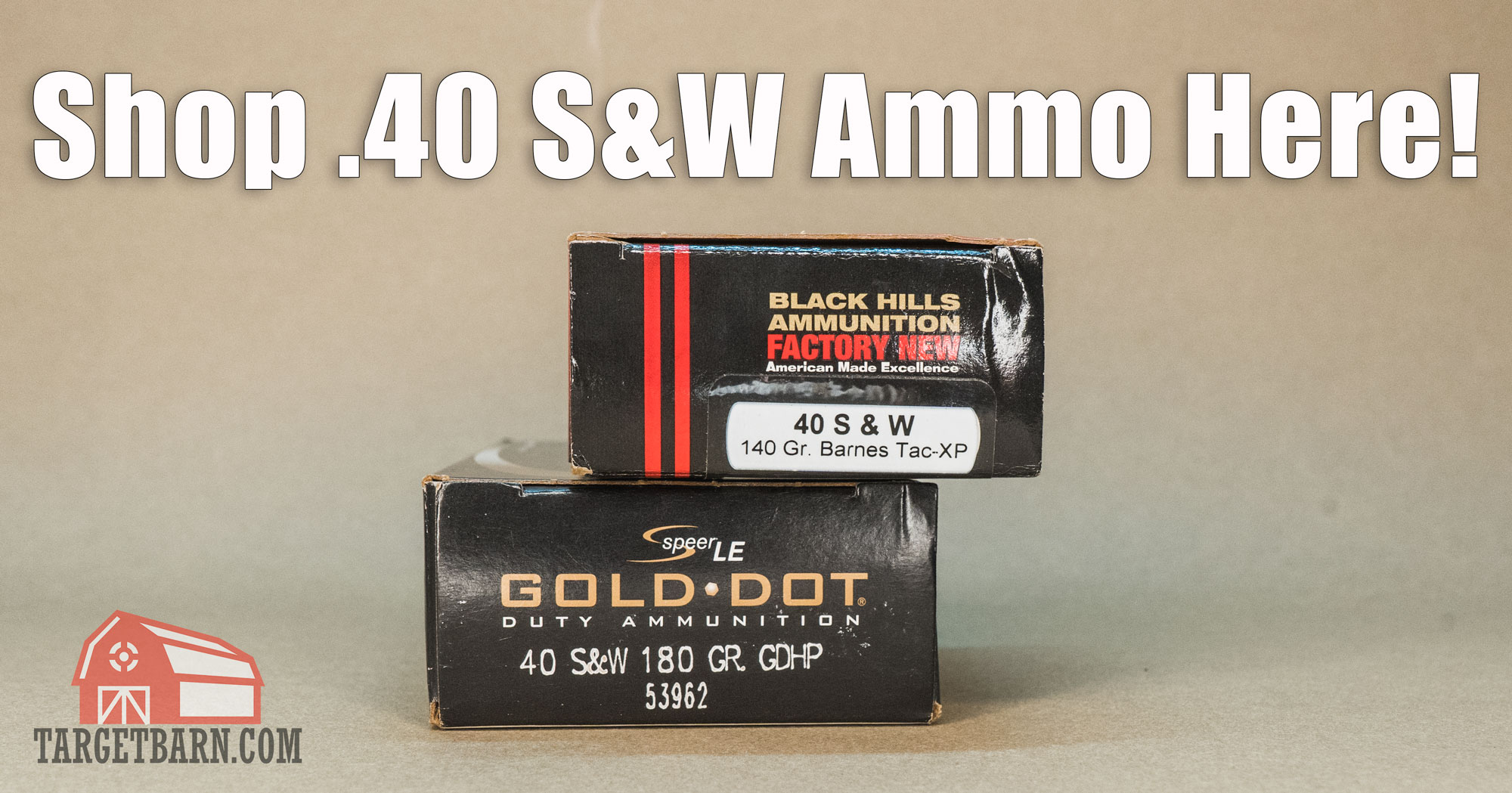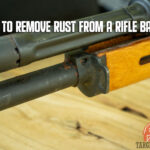Two popular self defense rounds a shooter might compare when choosing a round to carry are the .38 Special vs. .40 S&W.
Both rounds originated here in the USA and have been used by American law enforcement and military. So, how do they stack up as self defense rounds? Keep reading our .38 Special vs. .40 S&W comparison to find out.
.38 Special vs. .40 S&W: The Basics
- Both rounds originated in the USA
- The .38 Special was developed in 1998; the .40 S&W was developed in 1990
- The .40 S&W is shorter and fatter than the .38 Special
- The .38 Special has a bullet diameter of .357”; the .40 S&W has a bullet diameter of .40”
- The .40 S&W has double the maximum pressure than the .38 Special
- The .40 S&W travels at faster muzzle velocities and has higher muzzle energy than the .38 Special
- Both cartridges have been used by US law enforcement and military
- Both cartridges have a wide selection of handgun options
- During normal market conditions, it is easy to find ammo for both calibers
- Concealed carry .38 Special revolvers typically have a 5-round capacity; concealed carry .40 S&W pistols typically have a capacity of 6 to 10 rounds
.38 Special vs. .40 S&W Specifications
| .38 Special | .40 S&W | |
|---|---|---|
| Designed | 1898 | 1990 |
| Designer | Smith & Wesson | Bob Klunk |
| Place of Origin | United States | United States |
| Parent Cartridge | .38 Long Colt | 10mm |
| Case Type | Rimmed, straight | Rimless, straight |
| Bullet Diameter | .357" | .400" |
| Rim Diameter | .44" | .424" |
| Case Length | 1.155" | .850" |
| Overall Length | 1.550" | 1.135" |
| Common Bullet Weights | 100 to 147 grains | 105 to 200 grains |
| Maximum Pressure (SAAMI) | 17,500 psi | 35,000 psi |
The .38 Special is arguably the most popular revolver round on the planet. .38 Special ammo uses a .357” bullet usually weighing in between 100 to 147 grains. The .38 Special bullet travels at lower velocities, typically in the 700 to 900 fps range. Common .38 Special bullet types include full metal jacket (FMJ), lead round nose (LRN), wadcutters (WC), and soft points (SP).
The .40 S&W is a popular semi-auto pistol cartridge originally developed for law enforcement use. .40 S&W ammo uses a .40” bullet that typically weights between 105 to 200 grains. Rounds designed for self defense typically see velocities from 900 to 1200 fps, though both weaker and hotter loads are available.
.38 Special vs. .40 S&W Ballistics
One way we can see how defensive .38 Special vs. .40 S&W might perform is through ballistic testing. This is done by firing the rounds into Clear Ballistic’s 10% synthetic ballistic gel with a 4-layer fabric covering. The rounds are fired from a 10-foot distance which is in line with the FBI’s ballistic testing protocol.
We’ll first look at each round’s penetration depth in the gel. The FBI’s standards call for a penetration depth between 12 and 18-inches. This correlates with rounds that adequately penetrate soft tissue and reach vital organs, but don’t over-penetrate and completely pass through the intended target.
The next thing we can look at is bullet expansion. By digging the fired bullets out of the gel, we can measure how wide the bullet expanded as it passed through the gel. We want a bullet that adequately expands because it will create a larger wound channel in the target and also prevents over-penetration. There is no standard for expansion, but experts generally look for an expanded diameter of 150% of the original diameter of the bullet. So, for .38 Special that is .536” and for .40 S&W is .6”.
We’ve also recorded muzzle velocity to get an idea of how fast each round is traveling as it leaves the barrel and so we can see their muzzle energy.
We used the Ruger LCR with a 1.87” barrel to test the .38 Special loads. We tested the .40 S&W ammo using a Smith & Wesson M&P40 with a 4.25” barrel.
Keep in mind, we do these tests to get an idea of how the rounds might perform. They should not be the only factor in choosing a defensive round.
.38 Special Ballistics
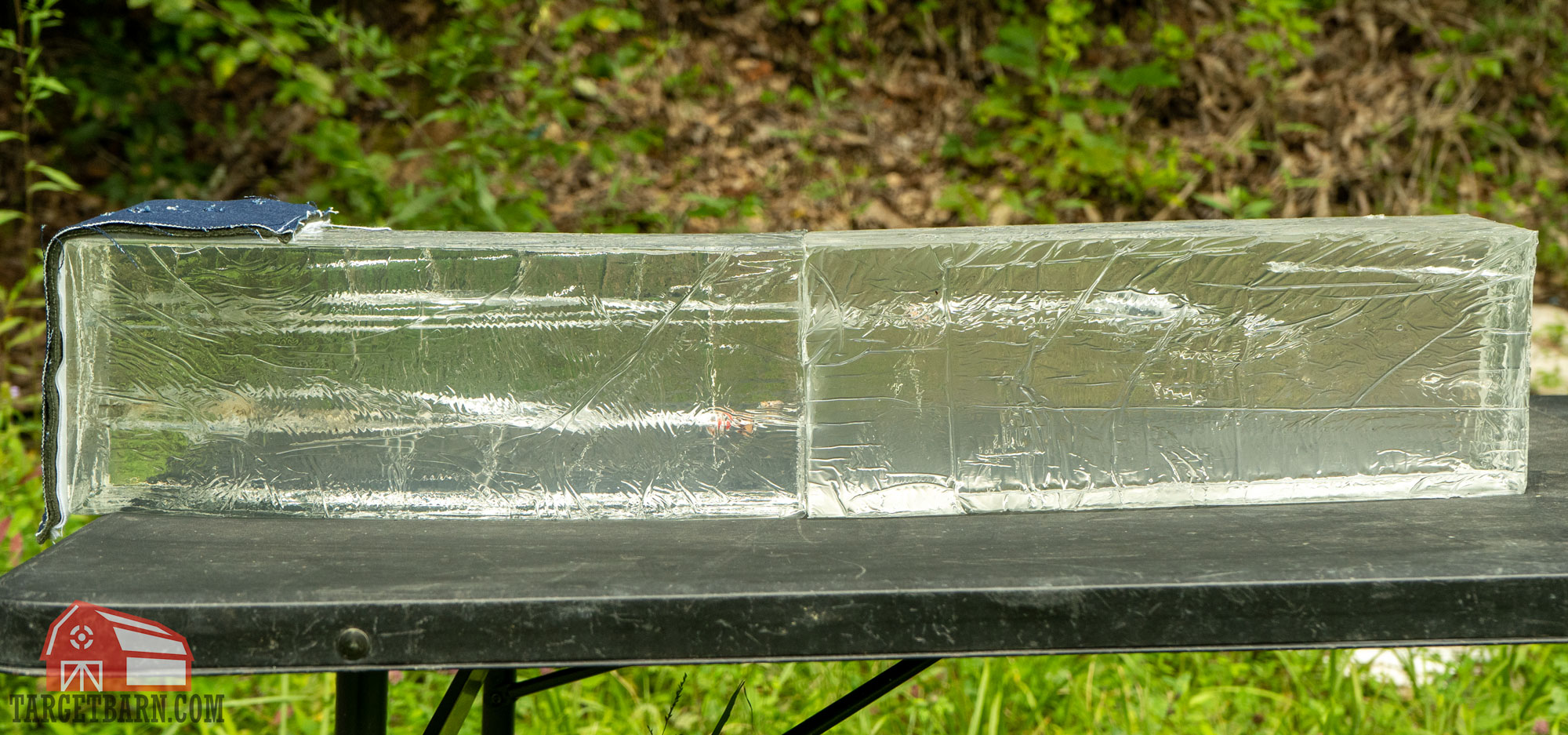
| Cartridge | 5-Shot Average Velocity (FPS) | Average Penetration (inches) | Average Expansion (inches) | Average Muzzle Energy (ft/lbs) |
|---|---|---|---|---|
| Hornady Critical Defense FTX +P 110gr. | 944 | 14.56" | .487" | 218 |
| Federal Personal Defense Hydra-Shok JHP +P 129gr. | 877 | 17" | .498" | 220 |
| Winchester Super-X +P LSWCHP 158gr. | 750 | 25.25" | .371" | 197 |
The biggest issue we see with defensive rounds out of short-barreled revolvers is that they don’t adequately expand. This is because their low muzzle velocities (typically under 1,000 fps) are not enough for the round to expand upon impact.
In our testing, the two hollow point .38 Special rounds, Hornady Critical Defense FTX +P 110gr. and Federal Personal Defense Hydra-Shok JHP +P 129gr. did adequately penetrate, but didn’t expand 150%.
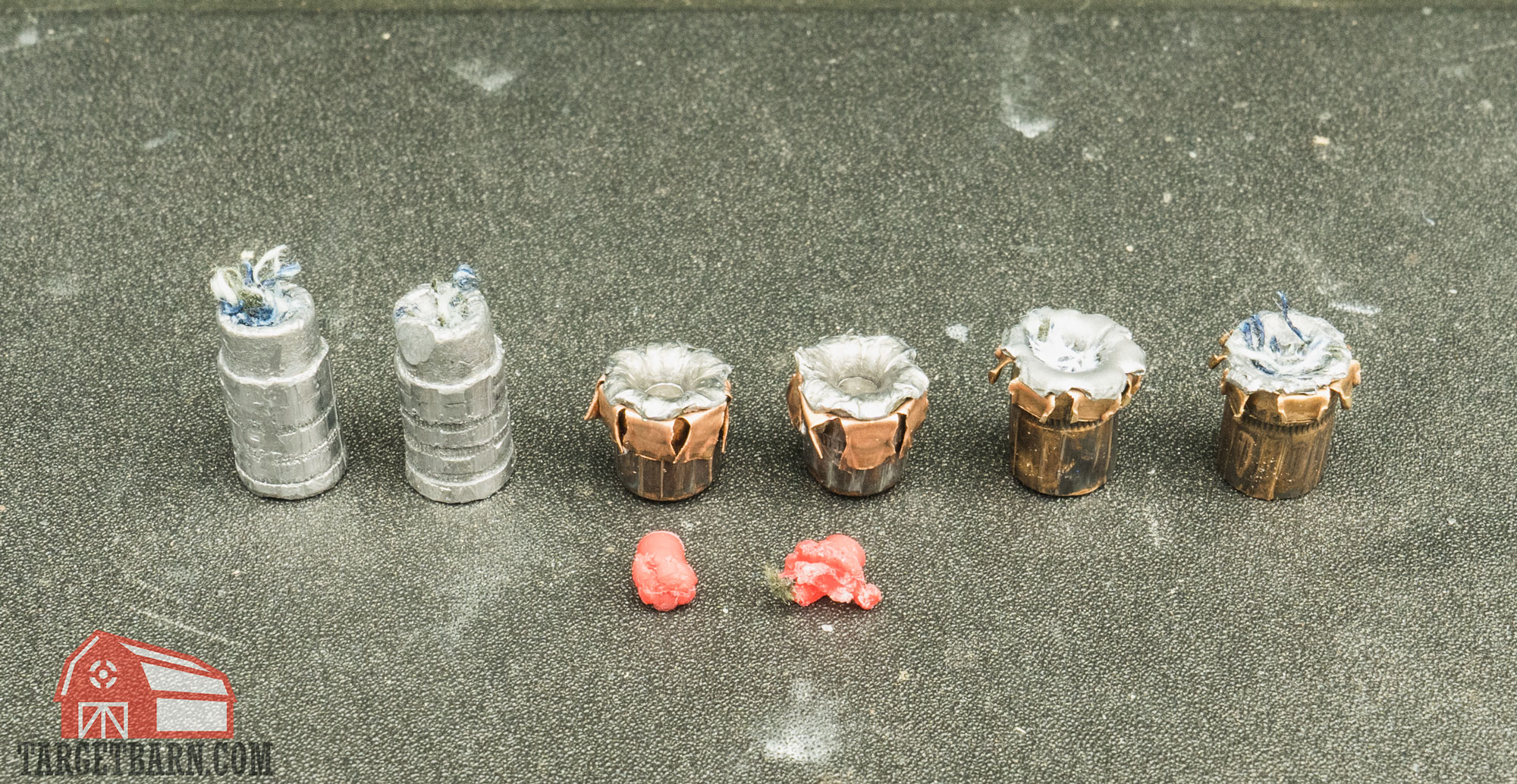
We also tested Winchester Super-X +P LSWCHP 158gr., a lead semi-wadcutter hollow point. The round over-penetrated and didn’t expand – though we don’t expect wadcutters to expand. In general, the best ammo for snubbies is a 148gr. wadcutter like the Magtech 148gr. Wadcutter. The wadcutter’s sharp shoulders create a large wound channel as it passes through its target. Wadcutters also have less recoil than other .38 Special defensive rounds, making them much easier to shoot. That’s because they’re not loaded as hot as the overpressure rounds that are needed when shooting out of snubbies.
.40 S&W Ballistics
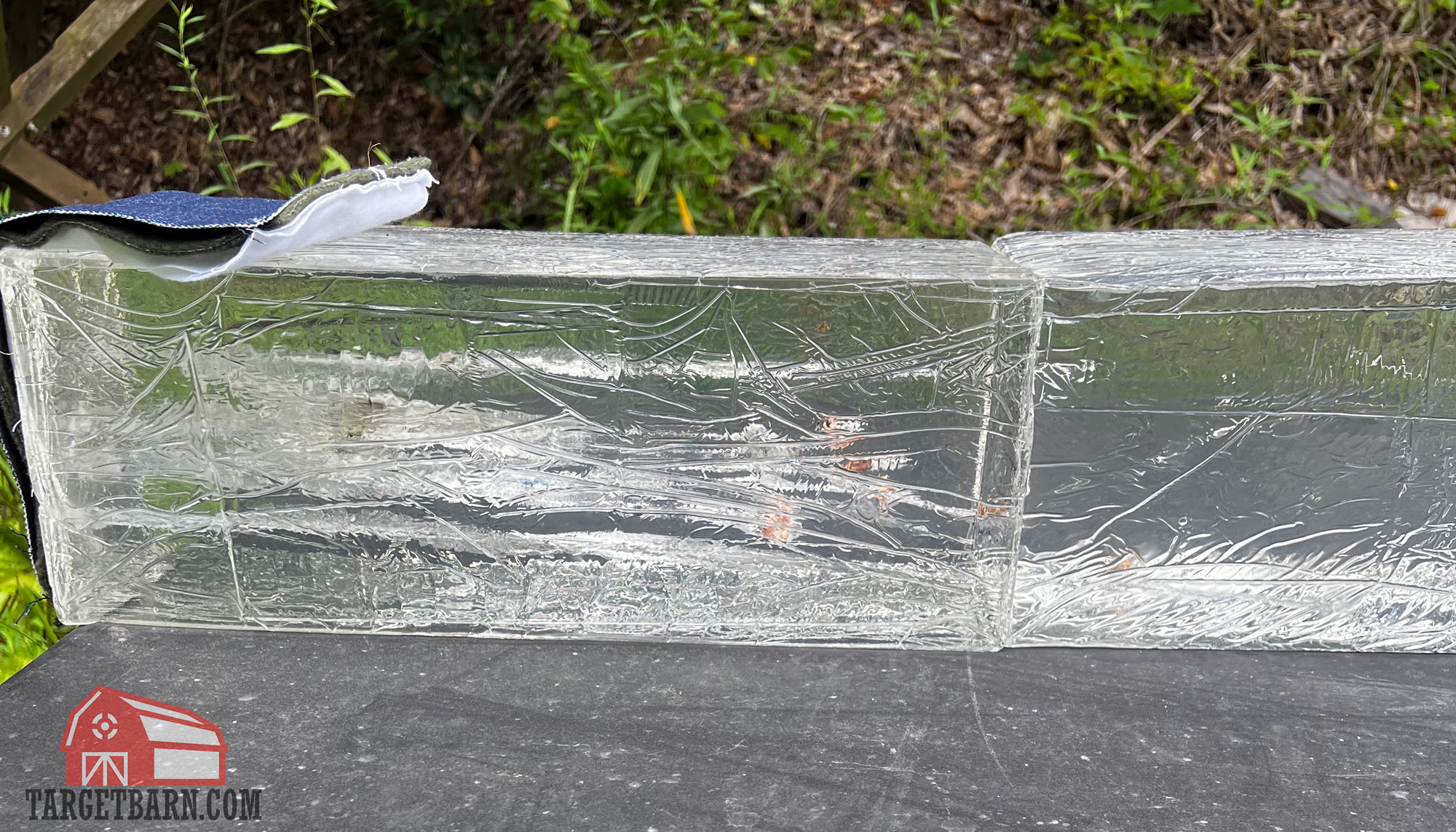
| Cartridge | 5-Shot Average Velocity (FPS) | Average Penetration (inches) | Average Expansion (inches) | Average Muzzle Energy (ft/lbs) |
|---|---|---|---|---|
| Black Hills TAC-XP SCHP 140gr. | 1066 | 12.69" | .782" | 353 |
| Federal LE Tactical HST 165gr. | 1100 | 17.75" | 1.117" | 443 |
| Speer Gold DOT GDHP 180gr. | 948 | 14.06" | .661" | 359 |
Typically, defensive .40 S&W rounds have no issue penetrating adequately. Some .40 S&W bullets are prone to clogging from the heavy clothing barrier which can lead to expansion failure and over-penetration.
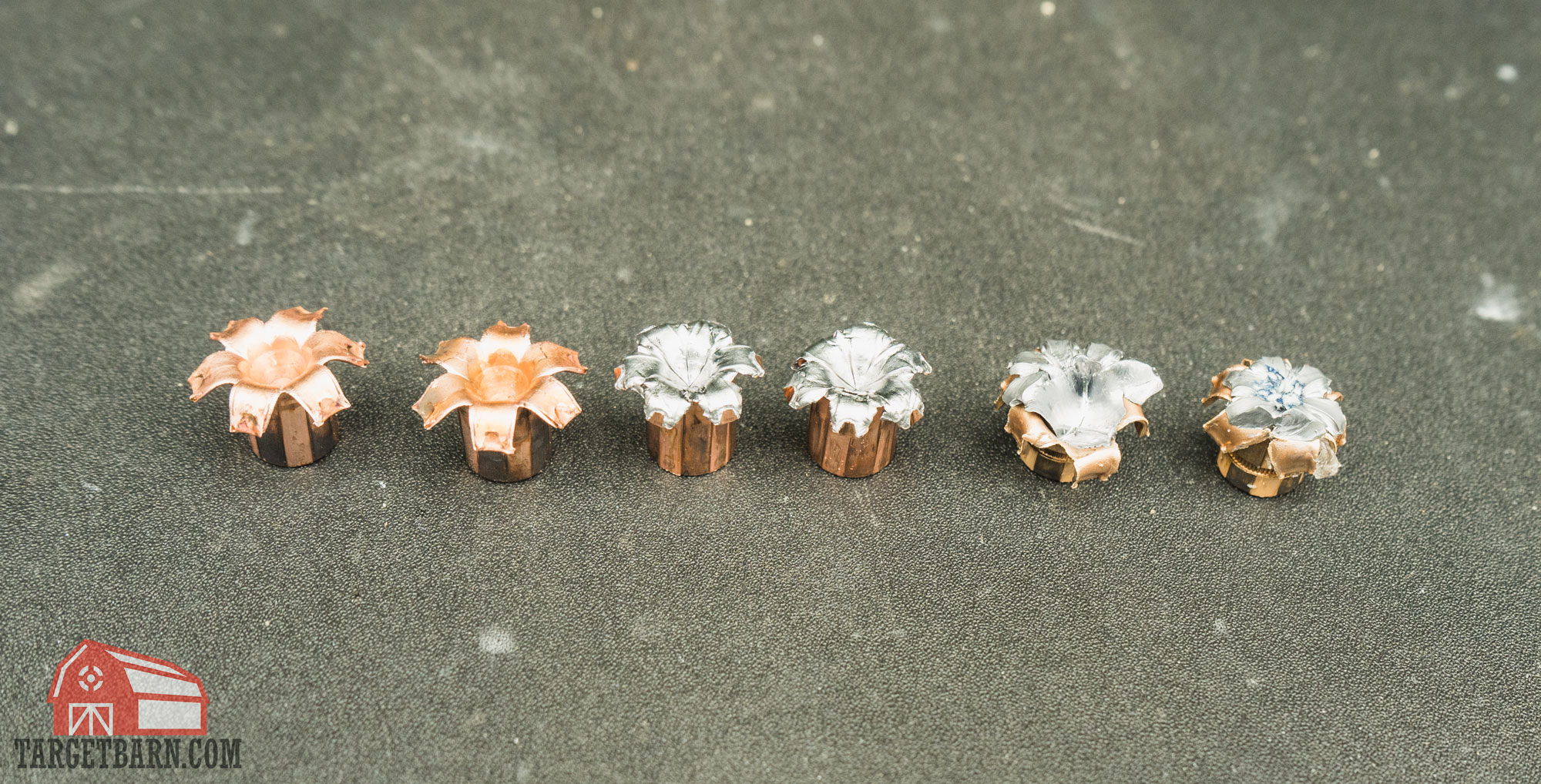
The rounds we tested all adequately penetrated and expanded, reaching the minimum 12-inches of penetration and 150% expansion.
.38 Special vs. .40 S&W for Self Defense
As you can see in our ballistic testing, with the right ammo load, both calibers are adequate for self defense. However, you have to balance the other pros and cons of the .38 Special vs. .40 S&W to see the whole picture of each round.
The .38 Special, especially when fired out of a snub nose revolver, can be extremely snappy and unpleasant to shoot. This can affect accuracy and follow-up shots. You are also limited to revolvers and their lower ammo capacities. On the other hand, revolvers are simple to shoot and less likely to malfunction if properly maintained. When loaded with wadcutters, they can be both effective and comfortable to shoot. They can also be easier to conceal for some shooters.
The .40 S&W is a powerful round which means it can have heavy recoil, especially out of compact and sub-compact pistols. When loaded with the right ammo, the .40 S&W has excellent ballistic performance. The downside is that its sharp recoil can make it uncomfortable and difficult to shoot. During my days working at gun stores, I helped many shooters trading in their .40s for the more manageable 9mm.
Gun Selection & Capacities
When comparing .38 Special vs. .40 S&W for self defense, you need to look at the gun options available.
.38 Special Gun Options
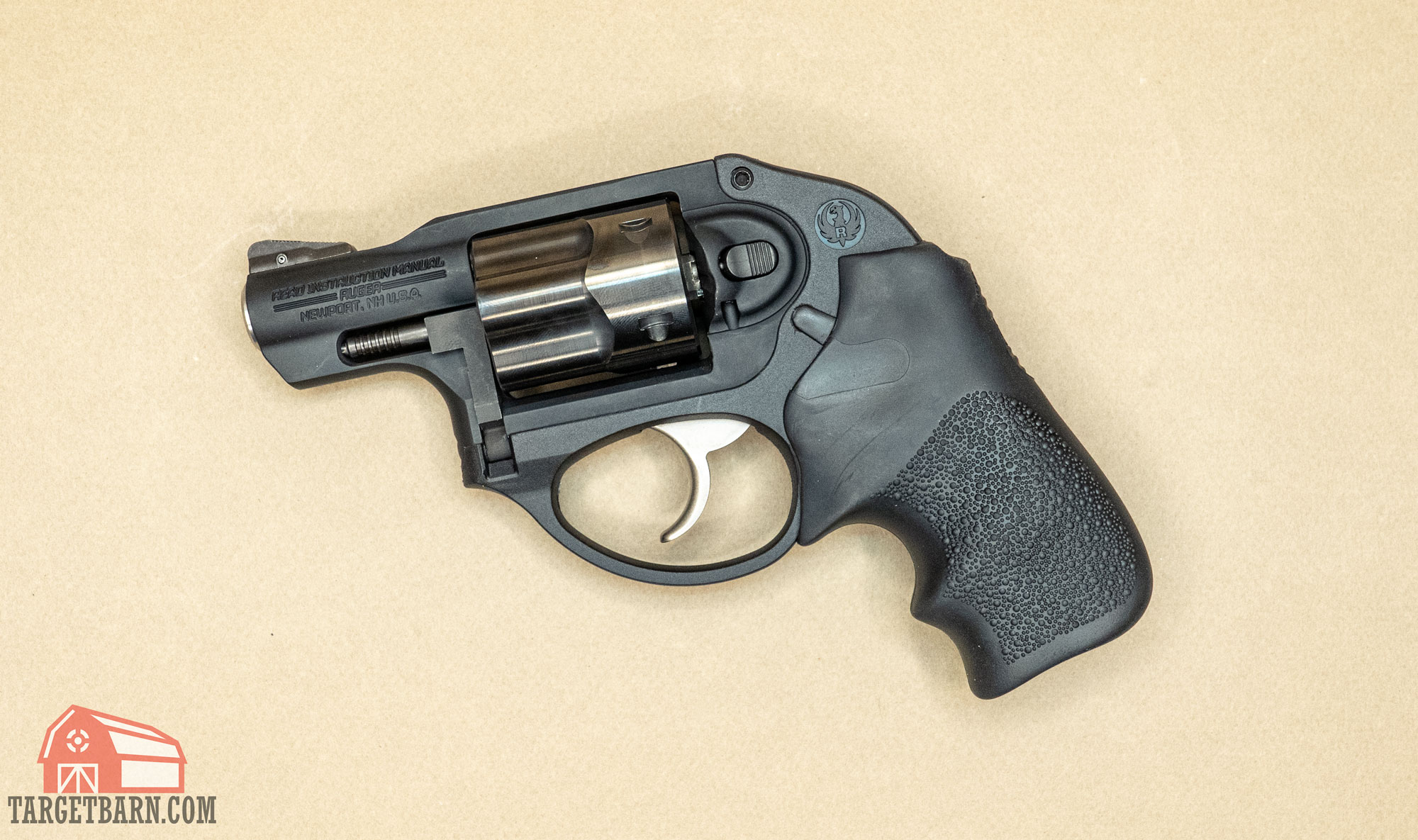
The .38 Special cartridge is primarily a revolver cartridge, which means the majority of your gun options will be revolvers. There are a number of quality revolvers on the market, and nearly every manufacturer that produces revolvers has one chambered in .38 Special.
For concealed carry, most shooters carry a snub nose revolver that has a barrel length of under 3-inches. The most popular of these snub nose revolvers are the Ruger LCR and the Smith & Wesson J-Frame. They typically have a 5-round capacity with a lightweight frame. Snubbies can be extremely easy to conceal in a pocket holster, ankle, or in a traditional on-body holster. However, they can be uncomfortable to shoot when loaded with over-pressure rounds.
Larger-framed .38 Special revolvers can hold 8-rounds, though they’re harder to conceal. Typically these revolvers can also shoot .357 Magnum.
.40 S&W Gun Options
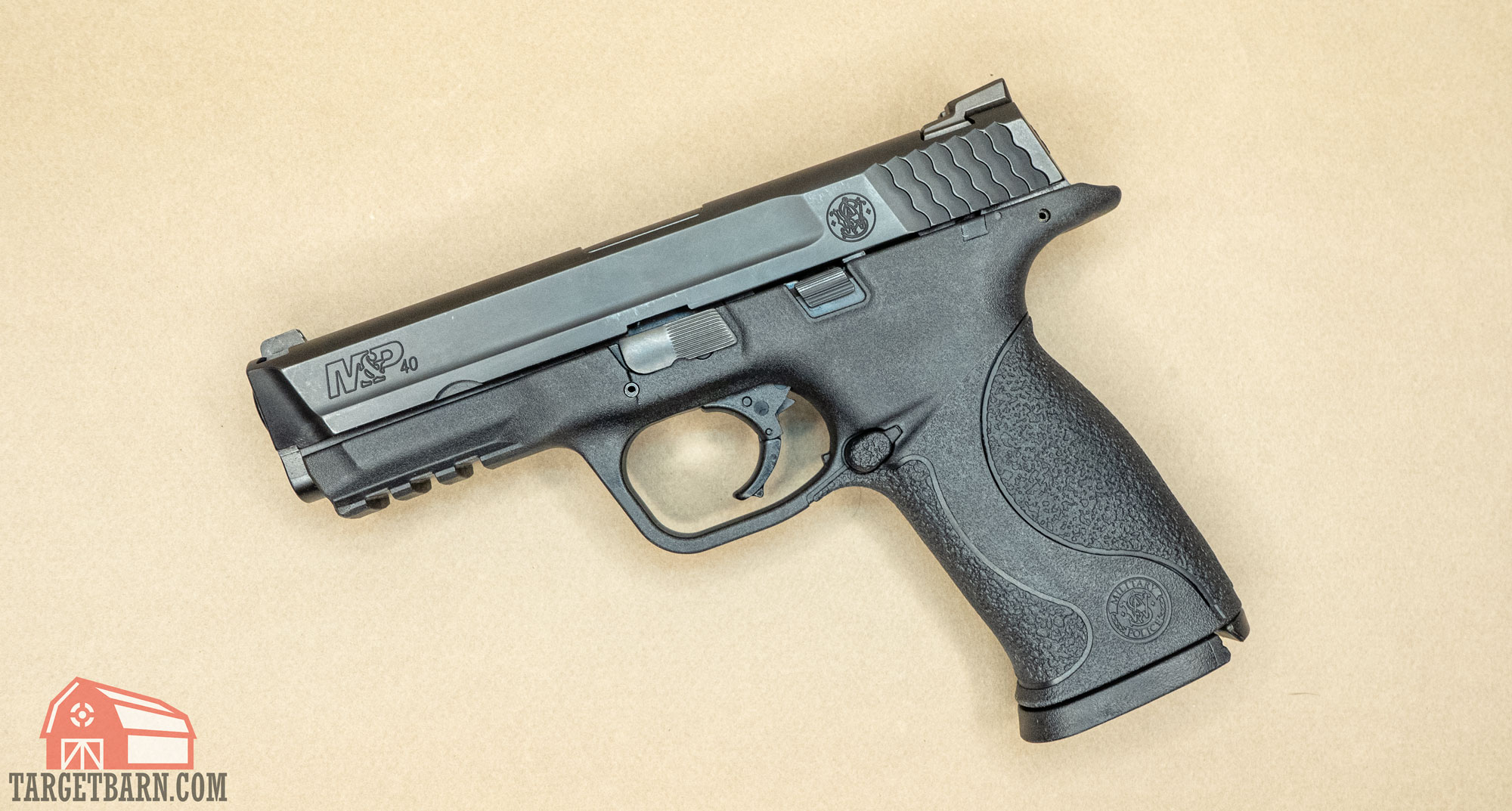
The .40 S&W is a semi-auto cartridge with plenty of semi-auto pistol options available.
Full size .40 S&W pistols like the Smith & Wesson M&P40 2.0, Glock 22, and H&K VP40 have standard ammo capacities around 13 to 15 rounds.
Compact and sub-compact .40 S&W pistols have capacities ranging from 6 to 10 rounds. They are typically easier to conceal carry, but come with the drawback of snappier recoil.
.38 Special vs. .40 S&W History
Now, let’s take a look at how these two rounds came to existence.
.38 Special History
Due to the .38 Long Colt’s poor performance during the Spanish-American War, the US government enlisted Smith & Wesson’s help to design a new revolver cartridge. Smith & Wesson’s new creation was the .38 Special. This new cartridge had the same bullet diameter as the .38 Long Colt, but with a heavier bullet and hotter black powder charge. Smith & Wesson soon offered this new round in smokeless blackpowder loadings due to its popularity.
The .38 Special became the chosen service revolver caliber among American law enforcement agencies throughout much of the 1900s. The round was also used in World War I, World War II, the Korean War, and the Vietnam War.
.40 S&W History
After the 1986 Miami-Dade Shootout, the FBI decided it needed a better round for its agents. The FBI worked with Smith & Wesson and Winchester to develop the .40 S&W: a slightly-reduced pressure version of the 10mm Auto that could be used in existing Smith & Wesson 9mm-frame pistols. Using a 9mm frame and double stack magazines meant these new .40 S&W guns had higher magazine capacities.
Although Smith & Wesson designed the round, Glock beat them to the punch by introducing the first .40 S&W pistols: the Glock 22 and Glock 23. Smith & Wesson followed shortly with the Model 4006. The round was adopted by law enforcement agencies and gained popularity among competitive shooters.
Even today you can find .40 S&W on the hips of law enforcement across the country. Its popularity among concealed carriers has waned, however, likely due to the improved ballistics and affordability of 9mm ammo.
.38 Special vs. .40 S&W: Final Thoughts
Both the .38 Special and .40 S&W are solid self defense rounds when you have the right combination of gun and ammo. Whichever caliber you choose, it’s important to train with your carry setup to make sure everything functions and that you are prepared should you need to use it.

